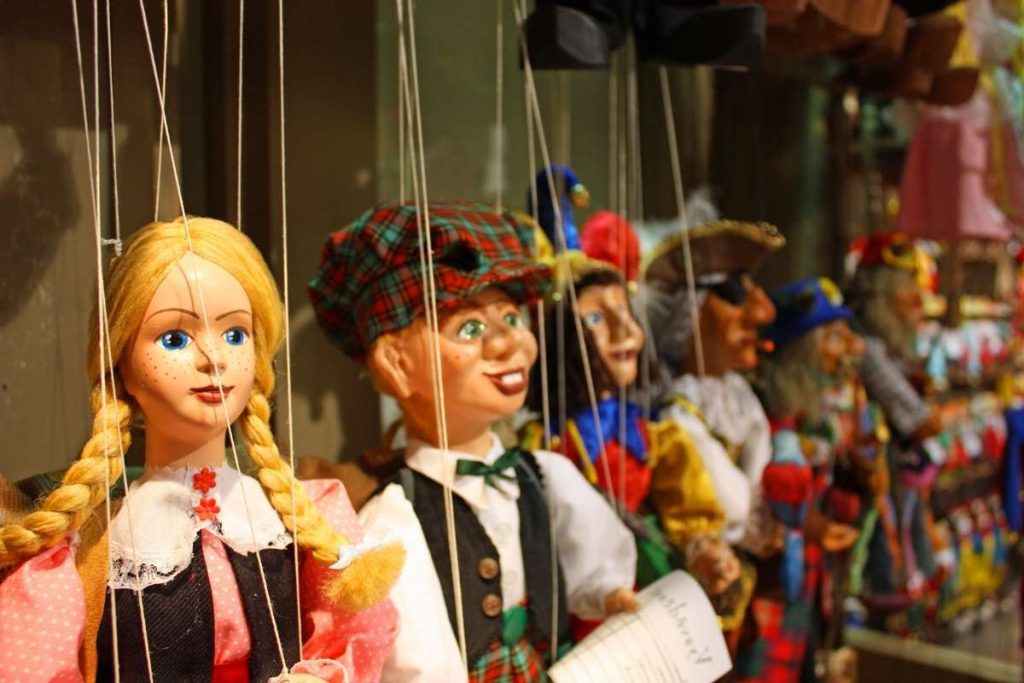Imagine a world where inanimate objects come to life, telling tales that dance between the lines of fantasy and reality. World Puppetry Day, celebrated on March 21, does just that, throwing a spotlight on an art form that has captivated hearts across the globe. Born from a proposal at the International Conference of Theatre Institutions in 1998, this day aligns with the International Day for the Elimination of Racial Discrimination, symbolizing puppetry's power to bridge divides. From the ancient sands of Egypt to the bustling streets of modern cities, puppetry has morphed through time, adopting various forms like hand puppets, marionettes, rod puppets, and shadow puppets. Each style, rich in history and bursting with creativity, offers a unique window into the cultures that nurtured them. As we celebrate World Puppetry Day, we're not just honoring an art form; we're acknowledging a universal language of storytelling that continues to evolve, enchant, and educate. Isn't it fascinating how strings and shadows can weave stories that resonate with the very core of our being?
Key Takeaway
Timeline
Day Activities
-
Crafting Workshops: Dive headfirst into the heart of puppetry with hands-on workshops where participants, young and old, can learn to create their own puppet characters. From stitching together vibrant fabrics to painting expressive faces, these sessions are a hotbed for creativity, offering a peek into the meticulous craftsmanship behind puppetry.
-
Puppet Parades: Imagine streets brimming with color as puppeteers, accompanied by lively music, parade their magnificent creations for all to see. These parades showcase a variety of puppet styles, from towering marionettes to intricate shadow puppets, each telling its own silent story, captivating onlookers with their animated grace.
-
Performances and Storytelling: As the sun sets, audiences gather for spellbinding performances that breathe life into tales old and new. Skilled puppeteers, using their artful manipulation, make puppets dance, fight, and emote across stages set under the stars, proving that this age-old art form still holds the power to enchant and educate.
Interesting Facts
1. Global Celebration
World Puppetry Day unites folks by showcasing puppetry's charm, transcending cultural and racial lines every March 21.
2. Historical Roots
Ancient civilizations like Egypt and Greece used puppets for both entertainment and sacred ceremonies, proving puppetry's age-old allure.
3. Diverse Forms
From hand puppets to shadow plays, puppetry morphs into various styles, each narrating stories in its uniquely captivating way.
4. Modern Evolution
Today, puppeteers blend theater, film, and tech, pushing puppetry into new realms of creativity and audience engagement.
5. A Day of Acknowledgment
World Puppetry Day not only celebrates this art's rich heritage but also applauds those keeping puppetry vibrant and evolving.
Why We Love This Day
- Celebrating Universal Artistry: World Puppetry Day shines a light on puppetry's universal appeal, bridging cultures and generations with its enchanting storytelling and imaginative performances.
Who doesn't love a good story, especially when it's brought to life by puppets? From the ancient sands of Egypt to the bustling streets of modern cities, puppetry has been a beloved form of entertainment and education. Its ability to transcend language barriers and cultural differences makes this day a global celebration of creativity and shared human experiences. Plus, seeing those inanimate objects come to life is just plain cool, isn't it?
- Honoring Rich Traditions and Innovations: This day is not just about looking back at puppetry's storied past; it's also about embracing its future.
Puppetry isn't stuck in the past. Far from it! Innovators in the field are constantly pushing the envelope, integrating technology and new artistic styles to create jaw-dropping performances. World Puppetry Day is the perfect time to recognize these trailblazers who ensure this ancient art form remains relevant and riveting. It's a testament to puppetry's adaptability and enduring appeal, proving that old dogs (or should we say puppets?) can learn new tricks.
- Fostering Community and Connection: Beyond the performances, World Puppetry Day fosters a sense of community among puppeteers and enthusiasts worldwide.
Let's face it, puppetry is a bit of a niche passion. But on World Puppetry Day, puppeteers and fans from every corner of the globe come together to share their love for this unique art form. Workshops, performances, and exhibitions offer fantastic opportunities for people to connect, learn, and be inspired. It's a reminder that, in a world often divided, there are still things that can bring us together in wonder and joy.
Past & Future Dates
| Month | Day | Year |
|---|---|---|
| MARCH | 21 | 2022 |
| MARCH | 21 | 2023 |
| MARCH | 21 | 2024 |
| MARCH | 21 | 2025 |
| MARCH | 21 | 2026 |
| MARCH | 21 | 2027 |
| MARCH | 21 | 2028 |
FAQ
What is the theme of World Puppetry Day?
World Puppetry Day, celebrated every March 21, pays homage to puppetry as a unique and diverse art form. For 2024, climate change takes the center stage as the theme, spotlighting puppetry's role in addressing global issues through creative expression.
What country is puppetry from?
Puppetry boasts ancient roots, with its first recorded instances emerging in the 5th century BC within Ancient Greece. The craft, believed to be over 3000 years old, varies widely across cultures but universally involves bringing inanimate objects to life to narrate tales.
Where is puppetry famous?
In India, the tradition of glove puppets holds a special place, particularly thriving in Uttar Pradesh, Orissa, West Bengal, and Kerala. While Uttar Pradesh's glove puppetry often tackles social themes, in Orissa, narratives revolve around the endearing tales of Radha and Krishna.
Where in the world would you find puppetry?
Puppetry, an art form with deep historical roots, is widespread across numerous cultures worldwide. Although the oldest records hail from Ancient Greece, similar ancient traditions are found in Asia, including China, India, and Java. The Americas too have their share, with the American Indians using puppet-like figures in ritual magic.
